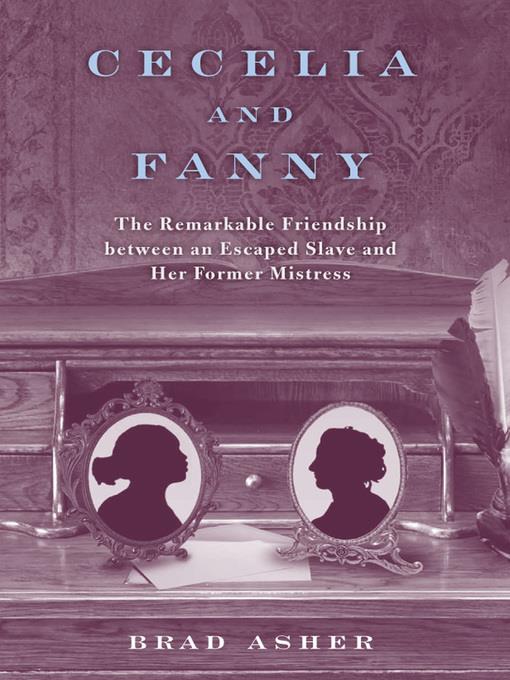
Cecelia and Fanny
The Remarkable Friendship between an Escaped Slave and Her Former Mistress
کتاب های مرتبط
- اطلاعات
- نقد و بررسی
- دیدگاه کاربران
نقد و بررسی

August 29, 2011
Reading between the lines and around the margins of this “lacunae-laden story,” Asher delivers a credible account of how two fairly ordinary women lived their roles as slave and mistress. When Fanny was five, her father purchased the infant Cecelia and her mother for $400; when Cecelia was nine, he gave her to Fanny as a “coming-of-age” gift. Six years later, in 1846, Cecelia escaped to Canada. While Fanny remained moored in Louisville, Ky., Cecelia moved to Rochester in 1860 and back to Louisville in 1865. Although “nothing in the archives substantiates the nature of the later relationship between ,” there is evidence they met again. Careful with “speculation,” though tantalized by it, Asher serves his history suitably straight, relevant, and readable. In recreating their lives from the slight specific documentation available, he sets an informing context, for example, how the slave hiring-out system worked, how courtship was conducted, what life was like in the Canadian black settlements, how the Civil War affected Louisville. He demonstrates that the two women were certainly “bound together by the most intimate of oppressions, mistress and maid”; he makes a less persuasive case that they had, as the title states, “a remarkable friendship.” Nevertheless, Fanny remembered Cecelia in her will with $100 and a black cashmere shawl, and Cecelia saved five letters from Fanny that led to this remarkable recreation of two lives.

September 15, 2011
Historian Asher (Beyond the Reservation: Indians, Settlers, and the Law in Washington Territory, 1853-1889) tells a remarkable story here that focuses on the experiences of two women, Fanny Thurston Ballard, a privileged daughter of a Louisville, KY, merchant, and her childhood personal slave, Cecelia. When the opportunity for freedom came on a visit to Niagara Falls with her mistress, Cecelia escaped to Canada. Asher interweaves and fills in the gaps in the lives of Cecelia and Fanny, through archival sources and by examining the history of slavery in Kentucky and the life of women in 19th-century America. He traces the progression of each woman's life, with evidence of Fanny's easier to find; she followed a familiar and conventional pattern, but for Cecelia, a life of freedom was not a life of ease. VERDICT While many books have been written about slavery, Asher shines a light on it as a "web of personal connections that extended beyond a single generation" and shows different aspects of the master-slave relationship. Recommended for both academic and armchair historians. [See "Booked Solid," LJ 7/11, p. 31.]--Nancy Richey, Western Kentucky Univ. Lib., Bowling Green
Copyright 2011 Library Journal, LLC Used with permission.

























دیدگاه کاربران